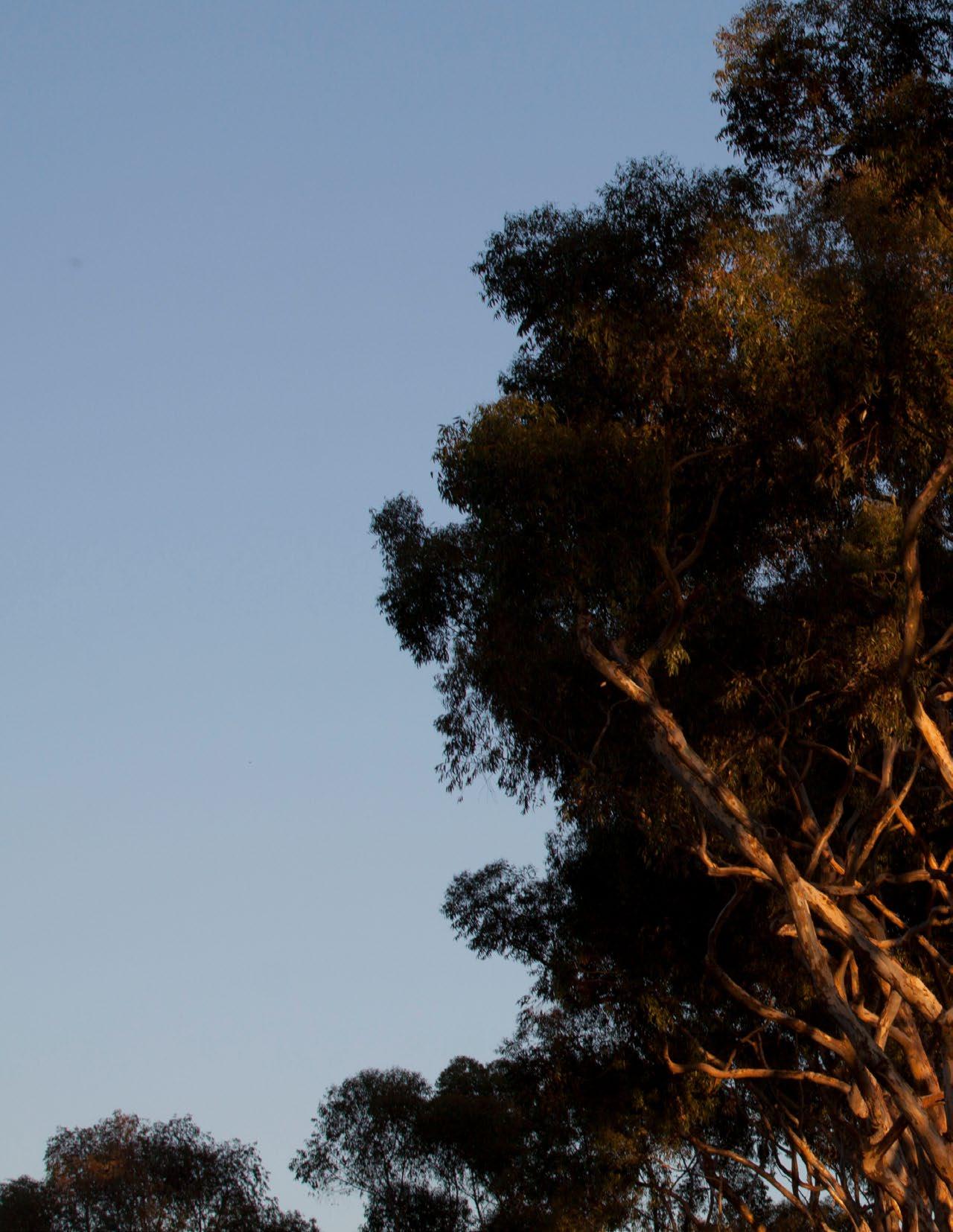
10 minute read
BURSTING THE BUBBLE:
Addressing Global Issues from the Mesa
A Cate education is more than just curriculum. It is a holistic experience that prepares young people for life after the Mesa. Beyond the traditional classroom setting, intentionality is built into the myriad programs that enhance the experience of students, faculty, and staff alike. Cate has long been seen as a bubble, cut off from the realities of the world. While there are obvious benefits from removing many of the challenges of the “real world” so that students are free to focus on becoming their best selves, it is also unrealistic to assume that the ever-growing challenges facing the world don’t have an impact on the student experience. Recent developments in both Cate’s programming and supports for students are intended to address the real world issues that break through the bubble.
Human Development & Counseling: Social-Emotional Wellbeing
According to the World Health Organization, one in seven teens experiences a mental disorder, and depression, anxiety and behavioural disorders are among the leading causes of illness and disability among adolescents. With social-emotional challenges for teenagers continuing to be on the rise, Cate’s Counseling Services and Human Development departments actively work to educate, empower, and support students.
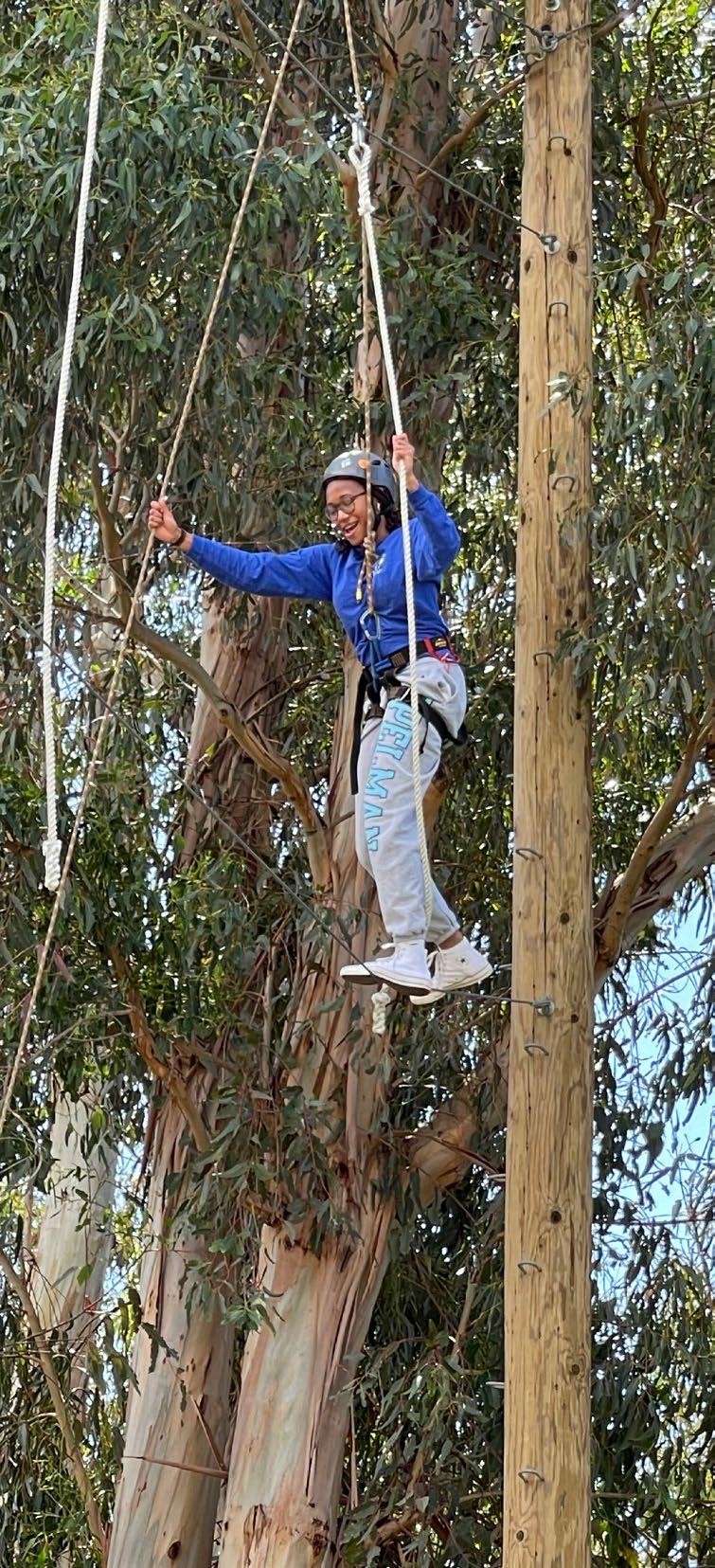
Mental health support at Cate is multifaceted. There are several ways in which students can receive psychological support, including individual counseling support, group counseling support, and wraparound support. Throughout the school year, counselors Nadine Maxwell and Dean’a Curry also work closely with the College Counseling office and work on promoting social and emotional skills to the junior class during their college seminar classes. These skills include self-regulation, resiliency, and meditation techniques. Additionally, the counselors collaborate with Human Development to promote helpseeking behaviors, teach students to recognize the signs of mental health struggles, and share mental health resources. Outside of the school day, the counselors are on call in the event a student is experiencing a significant mental health challenge that requires a crisis assessment or comprehensive risk evaluation.
Most recently, students in 10th-12th grade have been given the opportunity to become certified through the Teen Mental Health First Aid (tMHFA) program, an evidencebased training program for teens brought to the United States by the National Council for Mental Wellbeing in partnership with Lady Gaga’s Born This Way Foundation. It teaches teens in grades 10-12, or ages 15-18, to recognize or respond to common signs and symptoms of mental health and substance use challenges, common signs and symptoms of a mental health crisis, particularly suicide, and how to talk to a peer about getting appropriate help, the impact of school violence and bullying on mental health, how to open the conversation about mental illnesses and substance use with friends, and how to seek the help of a responsible and trusted adult.
“In a place like Cate, where your classmates are like your family, it is really important to be able to support each other. I really enjoyed being able to take this course and learn about how to support my friends and fellow Cate community members. Learning to spot the signs of mental health struggles and how to respond in the moment was an invaluable lesson,” shared Caroline Coors '24, who was one of 60 students to go through the program this year.
“The tMHFA Certification is a crucial step towards promoting mental health and well-being among Cate students. I was equipped with the necessary skills and knowledge to support friends who are struggling with mental health issues, providing guidance until professional help is available. This program emphasized and educated participants on the importance of approaching sensitive topics and conversations with empathy and care to build an inclusive and safe community on the Mesa,” shared Daisy Gemberling '25, who also completed the program this year. By the end of the 2023-2024 school year, the counseling department hopes to certify 100% of Cate students in 10th12th grade.
Q Q
Furthering this comprehensive support, Cate’s Human Development program has been revised and revamped. Department Chair Amy Gil shared her perspective on the HD curriculum and how it supports socialemotional wellbeing.
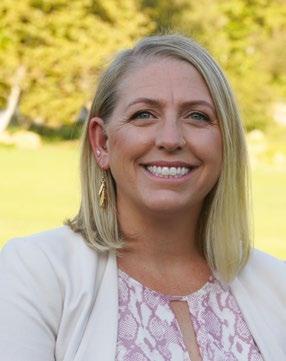
How does the Human Development curriculum support student growth without compromising emotional wellbeing?
Our Human Development curriculum takes a “challenge by choice” approach that gives students the opportunity to stretch themselves to the edges of their comfort zone. We encourage them to seek every opportunity to grow and learn new things, but also protect the freedom to say “no” or “not right now.” Additionally, we strive to build our students’ social-emotional learning toolboxes to better equip them to handle change, tolerate stress, and ask for help or support when needed. We strive to make their seminar courses a place where their emotional wellbeing is cared for while building resilience.
What observations have you made about the student population at Cate and their enthusiasm for socialemotional learning?
In just this last year I’ve seen the students embrace the connection piece that comes with social-emotional learning. Coming out of the pandemic I feel like so many of our students are craving those interactions, but are also relearning what genuine peer connection feels like. This generation is also unique in that they have likely had some form of SEL education prior to coming to Cate, so they possess the tools not only to participate and expand upon SEL topics.
Q
A A A
What do you find most rewarding about your approach?
The connection to students is by far the most rewarding part of the approach. We get to see kids be kids. We learn about their lives in both the academic and personal realms. Since the Human Development curriculum spans a three year period, we get to witness their growth across the entirety of the program which is a gift in itself. Additionally, the nature of our Senior TA program allows students to take the skills that they’ve learned in the program and pay it forward in the 9th and 10th grade programs.
College Counseling: Creating an anti-racist college process
The inequity in the college admission process is no secret – it garnered global media attention in the past five years and is a topic of much debate as students nationwide prepare for their journey into higher education. Cate’s College Counseling Office, affectionately known as the CoCo, takes a data-driven and self-reflective approach to the college search experience, and weaves in antiracist practices into the process to counteract the bias that exists in the college admissions process.
“In our CoCo class, our individual student meetings, and in our communication with parents, faculty, and the Board of Trustees, our messaging is clear, concise, specific to Cate, and honest. We let our students manage the tools and instruments we give them to encourage collaboration with our college office when they embark upon the research phase of the college process in junior year. This spirit of collaboration ignites a unique form of inquiry – a closely guided journey into the self. While students are learning about colleges, they are also learning about who they are at Cate and in the world,” shared Director of College Counseling Maude Bond. Using real-world narratives, data, and the latest findings in college admissions, the CoCo class launched an uncharted path that was nationally recognized at the prestigious NAIS People of Color Conference.
To further this work, Bond went to Head of School Ben Williams and pitched a new version of the program that flattened the internal hierarchy of the department for the purpose of teaching the CoCo class. “We all teach the class, we all work on the curriculum, and we all presented at the conference. After I told Ben about the articles we used, the data we presented, and the conversations we had with the students, I said ‘I’d like to make this an anti-racism class next year and submit it to a conference.’ Ben responded, ‘why wait until next year?’ So we kept going and I used a short checklist to ensure that we were aligned with anti-racist pedagogy. I was so thrilled when our class was selected as a case study at the conference and since December, I’ve been sharing our practices with colleagues from across the country who are interested in implementing a version of our class at their school.” Key points include:
• Denying racism perpetuates racism (no denying racism in this class)
• Showing that there is an opportunity gap and not an achievement gap
• Acknowledging intersectionality – being anti-racist also means anti-misogyny, anti-transphobic, anti-homophobic
• Acknowledging whiteness and white supremacy
• Explaining that racism is a harmful system and not a collection of bad people
• Teaching representative history
• Acknowledging the need for self-care
College outcomes at Cate continue to be favorable, and students and parents alike report being better informed and better prepared as they navigate the everchanging landscape of college counseling.
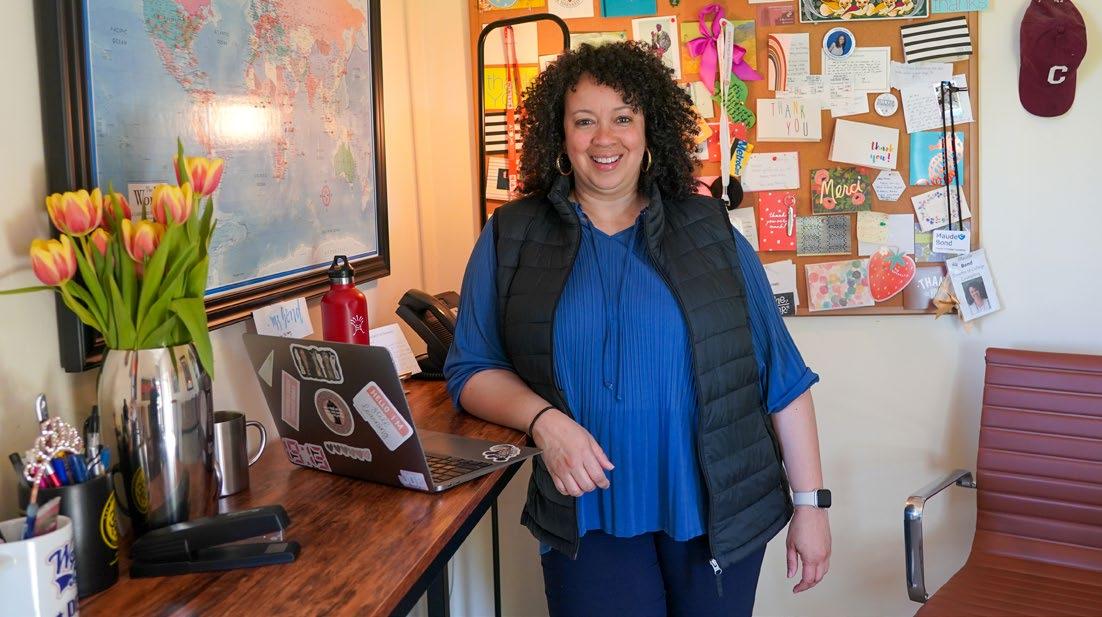
Women in STEM
Representation of women in STEM fields has historically been low, and nationally, great strides have been made in the last 15 years to bridge the gap. According to the National Science Foundation’s Science and Engineering Indicator’s Report, despite accounting for about half of the employed U.S. workforce, women constitute only 34% of those employed in STEM occupations. At Cate, those numbers look a bit different. Of the 56 senior students who take an advanced elective in science, 40, or 72%, identify as female, with a majority of femaleidentifying students specifically taking courses in life sciences.
According to Science Department Chair Craig Bouma, “Cate is a school that follows the Physics First (PF) sequence (physics, chemistry, and biology). Long ago, the Cate science department adopted PF for various reasons, including ensuring all students can access a full-year, lab-bassed physics course. Across the country, most students study biology and chemistry, and there is a gender imbalance in physics classes, especially at the university level. However, at Cate, all students (i.e., all genders) take Physics.”
Additionally, of the five advanced science elective teachers, three are female –Beth Caylor, Cassia Sonderleiter, and Kadeine Peterson. Representation of strong female role models in the science classroom make an impact on students in a significant way.
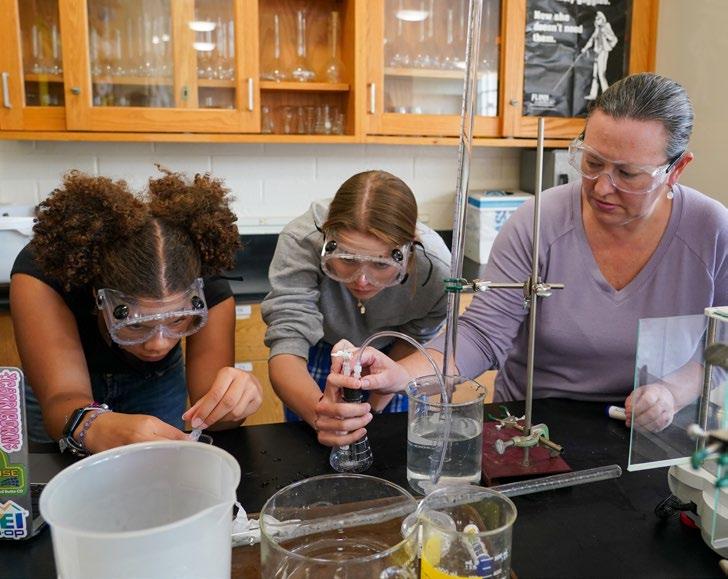
“As a woman interested in pursuing a career in the sciences in the future, I have been fortunate enough to surround myself with lots of like-minded women and wonderful role models during my time at Cate. Learning in a community where women are not the extreme minority has made the pursuit of knowledge in various niches of the scientific field feel much more accessible to me. Cate’s advanced science programs have developed my curiosity in a variety of biological and chemical fields – from toxicology to neurobiology to marine biology. I feel that Cate is part of the solution: having balanced and small classes that encourage inquiry from all their students will no doubt introduce more women to fields that historically lacked female representation,” said Cathleen Chow '23, who has taken three semesters of Advanced Biology electives this year.
“At the beginning of the year I was definitely nervous about chemistry because I was the only girl and I didn’t know the other guys too well. I hadn’t had chemistry with Ms. Sonderleiter before, but we quickly found a connection especially when we look at each other and laugh when someone says something that’s very obvious or that we already learned. I’m so grateful to have her as a teacher, and I myself have asked her about being a woman in STEM. It’s been inspiring to have her as a teacher this year and I’m really glad I took chemistry,” shared Desi Flores '23, who is the only female-identifying student in Advanced Chemistry.
Sustainability: Going Green the Cate way
As the world battles a growing climate crisis, and sustainability becomes a buzzword in every industry, Cate continues to demonstrate responsible choices through sustainability. Efforts in sustainability are not new to Cate – the School was recognized as a California Green Ribbon school in 2021 – but it continues to be a focus area as the campus evolves. Through four specific efforts, Cate’s green initiatives create a unique solution for sustainability challenges here on the Mesa.
Water
The School has a comprehensive wastewater recycling system. “We can see the direct results of our waste and use that knowledge to fine-tune and implement new programs. Water conservation has also been a priority of the school. We are consistently looking for ways to implement droughttolerant plantings and landscaping,” shared Compost Coordinator Lindsay Richardson.
Sun
With ten buildings on the property collecting solar, the School is passively reducing its energy consumption every day. With the future implementation of a solar bank, the School is looking forward to reducing its energy use even further.
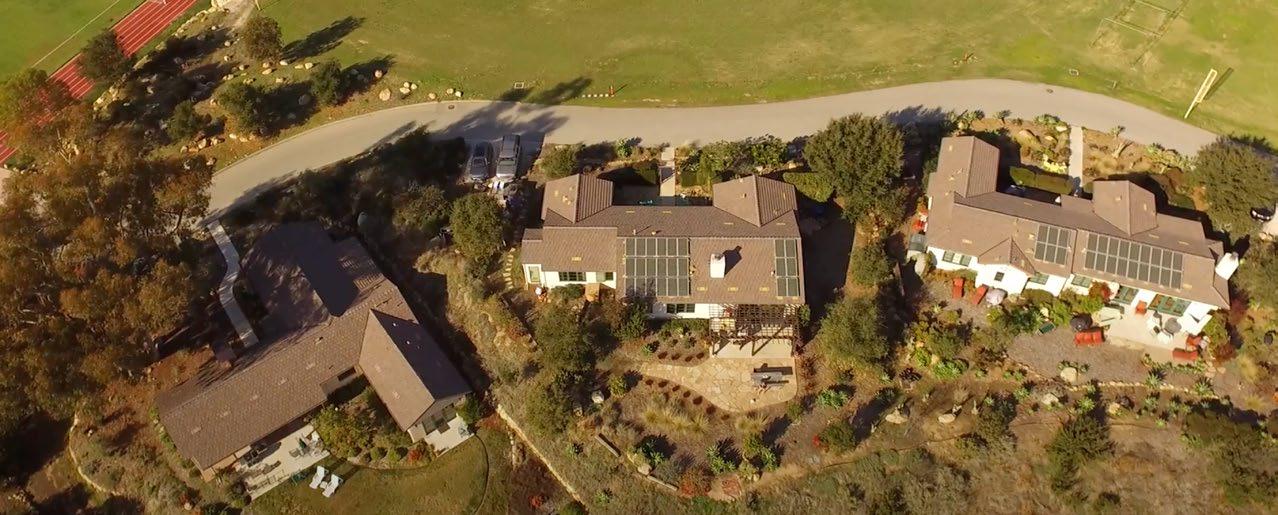
Food Waste
In 2022, Cate began operating the Rocket Composter which helps reduce the School’s impact on local landfills. By taking all of the dining hall’s non-edible food and redirecting it to local farms and the on-site composter, the school is upcycling a product that was previously going into the waste stream. Since the end of September, over 6,700 gallons of food waste has been diverted from our local landfill through the use of the Rocket and Cate’s partnership with a local farm.
On campus, the student-run Environmental Club has been working alongside Richardson to help with compost incentives. “We’ve had two successful beach cleanups before Saturday classes this year with some of our members, and in meetings we’ve begun discussing sustainability measures on campus, such as the sewage treatment and water reclamation system. Our goal is to encourage others to embrace environmentalism in an approachable and positive way,” explained club heads Claiborne Beurle '23, Lylie Bechtel '23, and Mary Foster '23.
Buildings
Since 2007, the school has implemented an internal guideline to ensure that all new construction meets LEED certification standards. Currently, the School is in the midst of building the brand new Inquiry Center in place of the Raymond Commons. Kevin Hartigan, general contractor for the project, noted, “At the start of the project, we discovered during demolition that all of the old form boards were re-used in the roof sheathing. We decided to salvage the boards rather than buy new wood and use these boards again to form the new walls. This provided an authentic texture to new walls making them look as old as the original parts. We are also using SAGE glass again, like we did in Booth Commons, to mitigate nocturnal light pollution from the building and shade the South windows.
The world beyond the Mesa spins on, and the challenges of a new and developing world persist. By addressing these issues head-on, Cate is taking an important step towards ensuring that its graduates are not only prepared to succeed academically and personally but also to engage meaningfully with the wider world. By combining a strong educational foundation with a commitment to social responsibility, Cate is positioning itself as a model for what a 21st-century campus should be.










